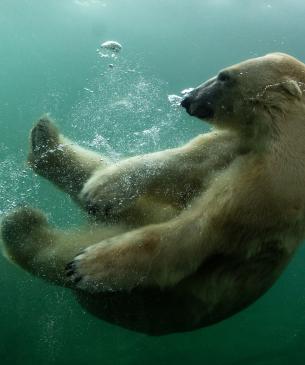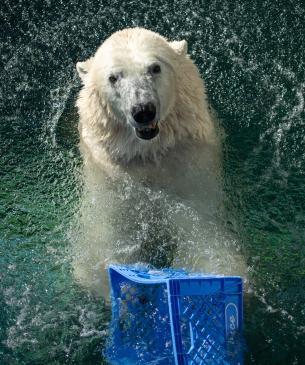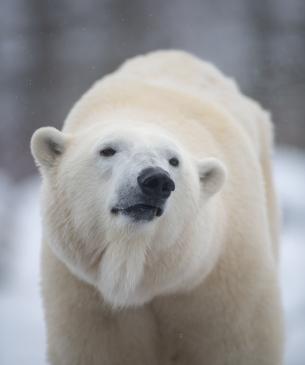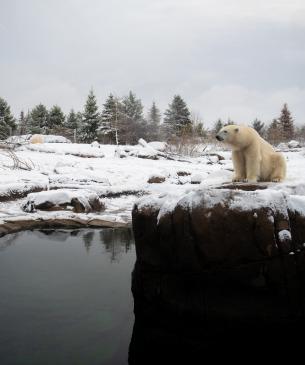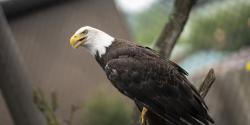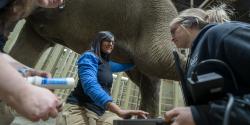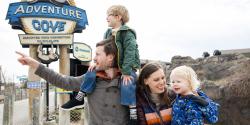The polar bear inhabits Arctic sea ice, water, islands and continental coastlines.
It prefers sea ice habitat with leads, next to continental coastlines or islands. Leads are water channels or cracks through ice, which may remain open (ice free) for only a few minutes to several months, depending upon weather conditions and water currents. Polar bears hunt seals in the leads, using sea ice as a platform.
At the Columbus Zoo, we’re dedicated to the conservation of polar bears, specifically through our participation in The Association of Zoos and Aquariums' (AZA) Saving Animals from Extinction (SAFE) program and support of Polar Bears International.
Scientific Name: Ursus maritimus
Conservation Status: Vulnerable
Size: Body length for females can reach up to 6.5 ft., while males can reach up to 8 ft.
Weight: Depending on the season, females can weigh between 350 and nearly 700 lbs. Males can range from 650 to more than 1700 lbs.
Median Life Expectancy: Males: 20.8 years; Females: data deficient


